Arabic Perfumes
Perfumery has been a cultural tradition in the Arab communities for thousands of years. Typically, Arabs are highly principled and demanding people, and using quality perfumes has been treated as a mark of luxurious status in Arabian societies since the ancient ages.
Although there are diverse perfumes available in the global perfume market with several categories such as Designer perfumes, Pure oil perfumes, and Niche perfumes, Arabic perfumes always acquire a top position with their complex and pleasant smells.
Before we try Arabic perfumes to experience the distinctive heritage of Arabian luxury, it’s worth knowing what the Arabic perfumes actually are.
So, let’s deep dive into the Arabic perfumes.
Table of contents
-
What is an Arabic perfume?
-
History of Arabic perfume
-
Different types of Arabic perfume
-
How to wear Arabic perfume?
-
Final words
What is Arabic Perfume?
Most commonly, Arabic perfumes are composed of pure essential oils that are known as ittars or attars. Arabian countries are Islamic countries and traditionally, Arabic perfumes are free from alcohol. In Arabic perfumery, precious ingredients such as oud, jasmine, musk, and amber have been used to blend strong and unique oil fragrances. Arabian rose and frankincense also have equal roles in the process of making Arabic perfumes.
Apart from Attar or ittar oils, incense tablets (known as dukhun or bakhoor), oud scented wood chips (known as oud muattar), and pure oud wood chips are highly sought after in the Arabian people.
History of Arabic Perfume
The term “perfume” is derived from the Latin word “per fumus” which means “through smoke”. As per the oldest records, perfumery started in ancient Egypt, Mesopotamia, and the civilization of the Indus Valley. Later, it was vastly experimented and refined by Muslims, especially Persians and Arabs.
In the early days, Perfumes were used majorly for luxurious purposes and gradually tends to die. But Arabs strongly preserved the perfumery traditions and, with the rise of the Islamic age, it increased widely and became common in their daily lives.
In early history, Arabs and Persians were commonly traders due to the desert areas and they would often spend days traveling long distances for trading with diverse communities. They used to collect precious spices and wood from Southeast Asian counties for making Arabic perfumes.
They used majorly saffron, musk, amber, jasmine, oud, frankincense, and sandalwood for making Arabic perfumes. The Arabian rose which grows in the valleys of Taif is also a vital ingredient.
In the 9 Th century, Abu Yusuf Al Kindi, an eminent Arab Muslim physician and chemist, described more than 100 recipes for making aromatic waters, fragrant oils, and substitutes of costly drugs in his book “Book of the Chemistry of Perfume and Distillations”. He also mentioned 107 methods and techniques regarding making perfumes and equipment.
Since then, perfumery became an inherent part of the Arabian culture. Arabic perfumes demonstrate the perfumery traditions of Arabs till days.
Different Types of Arabic Perfume
The total range of Arabic perfumes is limited to a very few, but royal class are globally dominant. These perfumes host very special positions in the middle eastern perfume market and obviously cost higher compared to other categories.
However, if you want to experience the royal scents, you should definitely expect to pay in a majestic way. If you haven’t experienced Arabic perfumes till now, here’re some major items you may consider choosing the first time.
Oud Perfume
Oud, also known as Oudh, is one of the most valuable perfumery substances in the world. It is derived from the wood of the agar trees (Aquilaria) that grow mainly in the regions of Southeast Asia. When the tree becomes infected with a specific type of mold, it responds by secreting a precious, dark, and fragrant resinous substance, giving us oud. The dark infected wood and the resin both are known as oud.
Oud is a highly demanded ingredient in the perfumery industry. Oud scent smell can be explained as warm, woody, leathery, and animalic.
See our Oud Perfumes
Rose Perfume
The city of Taif in Saudi Arabia has a memorable history, unique geographic position, traditional culture, and beautiful atmosphere that converted it into a beautiful paradise of gardens. It’s famous for producing the best quality roses in the world.
Taif roses have powerful and sophisticated scents and the essential oil derived from them is considered the best rose oil in the world.
Saffron Perfume
Saffron is one of the most expensive natural herbs in the world. It grows mainly in Southeast Asian zones, but also in Italy. It’s aromatic and commonly known as “the king of spices” or “red gold”. It’s widely used in preparing medicines, perfumes, and cosmetics. It’s also used for staining, and cooking.
Saffron is commonly used in making Arabic perfumes. Its sweet and spicy smell imparts in blending diverse strong fragrances.
See our Saffron in Mysore Sandalwood
Musk Perfume
Musk has been used since the ancient ages as an expensive and popular perfume fixative. It’s a glandular secretion of musk deer typically found in India, China, Afghanistan, Pakistan, Tibet, and Siberia. It’s a very rare substance. Once it was harvested simply by collecting the musk pods naturally dropped by the deer but nowadays can only be obtained by killing mature male deer. Therefore, musk is considered one of the most expensive animal substances on the globe.
[Due to the fact that Musk deer is an endangered species “La Via del Profumo” does not sell it]
The smell of the musk is different and no other ingredient has such complex scents. However, its smell is described as earthy, animalic, woody, and something likely to the odor of a baby’s skin.
Amber Perfume
The term “Amber” came from the Arabic word “Anbar”. It refers to Ambergris which is a waxy or solid material derived from the sperm whale. Ambergris has been highly honored by perfumers around the world.
Ambergris is used as a fixative in making high-quality perfumes that are in demand in the global perfume market. A variety of Arabic amber perfumes are available in the market nowadays.
Bakhoor
Bakhoor is wood chips that are soaked in aromatic oil and mixed with other natural ingredients. Bakhoor is traditionally respected in Arabian cultures. On occasions, Arabs burn bakhoor and pass it among guests so that they can scent their clothing, hair, and hands.
How to Wear Arabic Perfume?
- In an Arabic way, you can mix up several Arabic perfumes to blend your very own signature smell.
- Arabic perfumes can be dabbed on pulse points.
- You can spray Arabic perfumes on your clothes, skins, etc.
- You may burn bakhoor or oud muattar (chips of agarwood, after the oil has been extracted. However, there is still a small amount of fragrance left in them. These are then soaked in essential oils) and take the scented smokes on your clothes, hair, and other body parts.
- You can burn bakhoor for scenting your home and surroundings.
Final words
Although a large number of varieties of perfumes are sold in the market, Arabic perfumes are globally respected for their quality, purity, and uniqueness. Most specifically, Arabic perfumes are made with the world’s most valuable and rare materials. If you want to experience the world’s best quality perfumes, you should definitely try Arabic perfumes. Obviously, provided that they are made of natural ingredients. And nowadays it is not often the case…

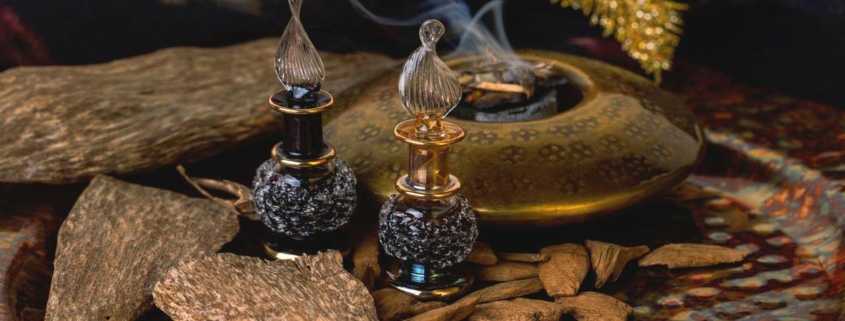

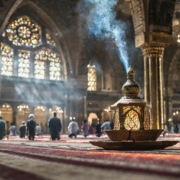
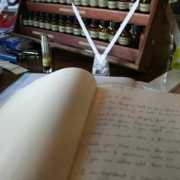
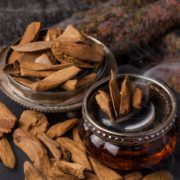
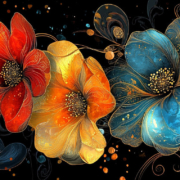
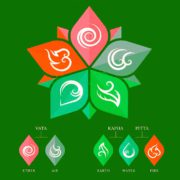
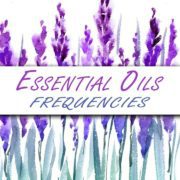
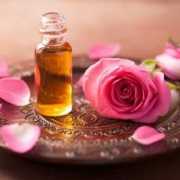
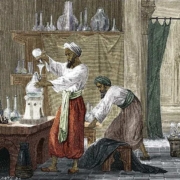













I was looking for buying natural rose perfume online and I found this blog. It was very helpful and I am very much delighted to know all the details provided here.